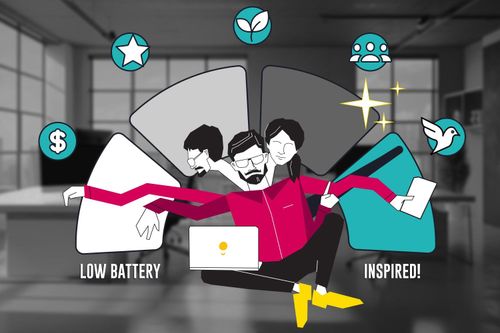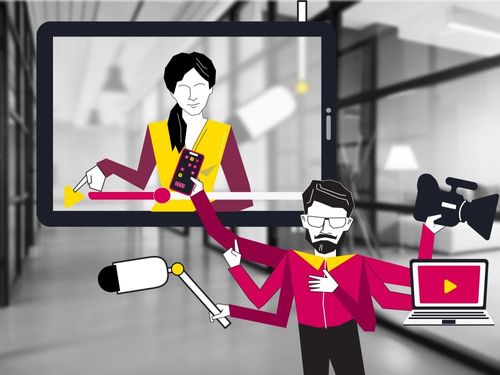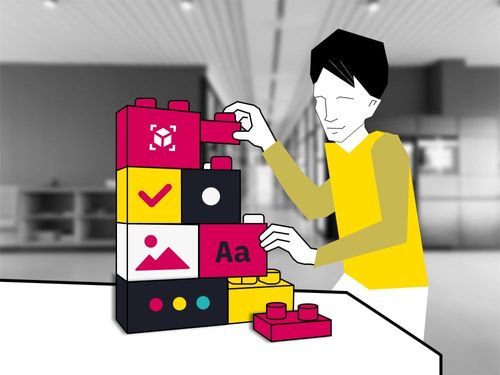
In 2024, according to Gallup’s State of the Global Workplace report, only 23% of employees worldwide are engaged. Just think about it, only one in every 4 or 5 people feel committed to their work and workplace. In some cases much less than this.
The rest are either just going through the motions (62%) without any motivation or passion for what they do, or are downright unhappy at work (15%).
Such disengagement is attributed to poor management and miserable job conditions.
So what will make them more engaged? Money and perks are important, but aren’t enough to keep developers happy. Decades of managing tech teams have already taught me that one needs to dig much deeper.
It’s all about the perspective
First things first. You need to understand what makes your people tick before making an offer. Without it, you can fail to connect with their true motivations and risk losing them to more appealing opportunities elsewhere.
It doesn’t mean you need an organizational psychologist to analyze every developer's personality.
But you need to invest time in understanding their preferences, drivers, career aspirations, and projects that excite them. This can be done through regular one-on-one meetings, feedback sessions, and fostering an open culture where developers feel comfortable sharing their thoughts and ideas.
After you understand these, you can consider improving their engagement by investing in one of the following principles:
1.The Trivial: Competitive Salaries & Benefits
Pay that matches the market shows employees that their work is valued. Fair compensation tied to clear goals fuels motivation and commitment.
Here’s how you can get compensation right:
- Benchmark industry rates: Check what others in your field earn to ensure your salaries are competitive.
- Structure incentive plans: Link bonuses to performance goals, like achieving a certain sales target or project milestone.
- Set salary review period: If the market changes fast, do frequent reviews; if stable - less frequent.
- Celebrate milestones: Recognize promotions and anniversaries to boost morale and show appreciation.
2. The Just: Fair Leadership
Leadership has a direct effect on how employees feel about their jobs. Leaders should be transparent, supportive, and consistent, setting clear expectations and giving regular feedback.
Tips to be a better leader:
- Empower your team: Let people take charge of projects and run with their ideas without hovering over them.
- Develop strengths: Identify individual talents and provide opportunities to grow in areas they’re passionate about.
- Build connections: Get to know your team personally and foster camaraderie through team events.
- Lead with vision: Share your goals and inspire your team by inviting them into the journey.
3. The Prospective: Growth Opportunities
People are more engaged when they can see a path forward. Offering learning and development opportunities shows employees you’re invested in their future.
Here’s how to promote growth:
- Open access to learning: Provide resources like workshops, online courses, and training.
- Encourage new skills: Motivate employees to take on new challenges and expand their expertise.
- Communicate promotion paths: Let employees know how to advance within the company.
- Guide career planning: Help your team set long-term goals and create personal development plans.
4. The awareness: Recognition and Appreciation
Saying thank you goes a long way. Recognizing both big wins and small contributions keeps morale high and employees motivated.
Ways to show appreciation:
- Say thanks: Verbally acknowledge achievements in meetings or through personal notes.
- Celebrate together: Use shoutouts, e-cards, or small gifts to show you value their efforts.
- Encourage peer recognition: Let teammates praise each other for a great job.
- Make it public: Share successes on Slack, email, or announcement boards so everyone feels recognized.
5. The Health: Work-Life Balance
Supporting work-life balance is crucial for maintaining happy and healthy employees. Flexible hours, remote work options, and understanding personal needs can make a big difference.
Here’s how to promote balance:
- Encourage breaks: Remind your team to disconnect and recharge to prevent burnout.
- Offer flexibility: Allow changes to schedules when personal or family issues arise.
- Manage workloads: Ensure tasks are achievable and that people aren’t overwhelmed.
- Support remote work: Let employees work from home to reduce stress.
6. The Energizing: Positive Environment
Creating a collaborative and inclusive culture is key to keeping employees engaged. A positive environment encourages everyone to contribute their best work.
How to Create a Great Environment:
- Optimize workspaces: Ensure ergonomics are right, and add elements like plants and good lighting to lift moods.
- Foster inclusivity: Train on respectful communication and create a safe space for everyone to contribute.
- Fix what’s broken: Regularly ask for feedback on what’s not working and make necessary improvements.
7. The Empowering: Autonomy
Empowering employees by giving them ownership of their projects and the freedom to approach tasks as they see fit can lead to higher creativity and satisfaction. At Smartexe, we trust our employees to make decisions that best reflect their expertise and understanding of our objectives.
8. The Trust-Earning: Transparency
Creating a culture of openness is crucial for building trust and engagement. When leaders are honest and upfront, employees feel more connected to the company’s mission and goals.
Ways to Foster Transparency:
- Share company updates: Keep everyone on the same page with regular updates about what’s happening across the business.
- Explain decisions: Whether it's good news or bad, explaining why decisions are made helps build understanding and trust.
- Own up to mistakes: When leaders admit errors, it shows humility and accountability, encouraging a culture where everyone feels safe to speak up.
9. The Growth Encouraging: Feedback
Open communication and regular feedback make employees feel valued and appreciated. It’s about creating a continuous loop where leaders and employees can share insights to improve.
How to Improve Feedback:
- Give regular updates: Keep employees informed with regular meetings or emails about team and company progress.
- Encourage open dialogue: Create opportunities for employees to share their thoughts, concerns, and suggestions without fear of judgment.
- Focus on growth: Use feedback as a tool to help employees grow, rather than just as a critique of past performance.
10. The Moral: Community Involvement
Connecting work with broader values makes employees feel part of something bigger. Engaging in community initiatives, volunteering, or supporting causes that matter to your team can deepen engagement.
Ways to Engage in the Community:
- Organize volunteer events: Encourage team participation in community service projects or charity events.
- Support local causes: Partner with organizations that align with your company’s values, allowing employees to contribute to meaningful work outside the office.
- Create team activities: Organize internal sports leagues or social clubs to foster camaraderie and build stronger connections.
11. The Adaptive: Flexibility
The ability to adapt to employees’ needs, whether through flexible hours or work-from-home options, shows that you value their well-being. Flexibility is one of the most appreciated aspects of modern work life.
Tips to Promote Flexibility:
- Offer flexible working hours: Allow employees to adjust their schedules to fit their personal lives better.
- Support remote work: Provide options to work from home when needed, helping to reduce stress and commute time.
- Be understanding of personal needs: When life happens, show empathy and offer solutions that can help employees balance work and home life.
By focusing on these key drivers of employee engagement, tech leaders can build teams of people who put their hearts and minds into their projects.
Looking for a highly-engaged remote team to join your project? Give us a ping.




















